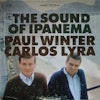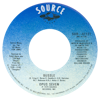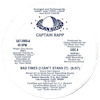I can trace my fascination with obscure music to a single tape. It was the summer before my first year of college, and I was on an internship in Gifu, Japan. A fellow American dubbed me a mixtape he claimed he’d gotten from a previous girlfriend. By now, the tape’s survived hundreds of rotations, it’s been duplicated for security, and the original still resides in my tightly curated cassette collection (for the car). A rookie music geek back in the summer of 1995, I only transcribed the song titles, neglecting to write down the artists’ names. Armed only with song titles, countless listens, and what became a rapidly, steadily climbing eBay feedback score, I spent the next fourteen years tracking down the anonymous artists.
My obsession with that tape opened the door to a wider world of music as I learned that sometimes you have to look a little harder to uncover the best music. I gave the tape the unimaginative title “The Bossa Nova Collection,” but when I started out, I had no idea there was anything more to know about Brazilian music. That tape was my gateway to a parallel universe of recorded sound that I couldn’t hear on the radio, MTV, or my friends’ car stereos. It challenged me to understand where this music came from, and, eventually, I made it my mission to master the bossa nova genre so that I could make an even better tape, “The Definitive Bossa Nova Collection.”
I fetishized the entire seventy-minute playlist, but the tracks that inspired my vinyl quest were sung by a smooth-as-caramel voice of a man who was accompanied by a classic bossa jazz quintet of acoustic guitar (the singer’s, I would discover), upright bass, piano, drums, and saxophone. It was the exact format as the essential bossa nova album by Stan Getz and João Gilberto, but in contrast to João’s perilously thin and delicate vocals, this singer crooned with an assured and suave voice.
I remember the moment of finding what I thought was the record with these songs at an online record shop, and my anticipation as I waited to hear back that the record was still available. A couple weeks later, The Sound of Ipanema arrived, and I was released to find the next missing piece. It’s funny how these things begin so innocently.
The American saxophonist Paul Winter recorded The Sound of Ipanema with Carlos Lyra in 1964, the same year as Getz/Gilberto. After playing all through Latin America on a State Department tour in the early 1960s, Paul Winter returned to Rio de Janeiro in 1964 and 1965, where he recorded this album with Lyra and his guitar accompanied by a bossa nova dream team of Sebastião Neto on upright bass, Sérgio Mendes on piano, and Milton Banana on drums.
It’s Carlos Lyra’s best album and a lesser-known bossa nova classic, but before that, it was just a handful of wondrously foreign songs dubbed to a cassette playing on loop in my fancy Japanese Walkman.


